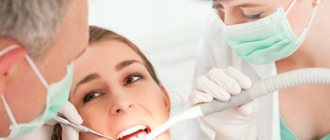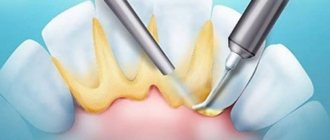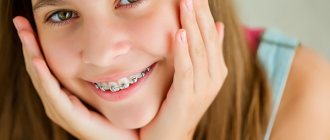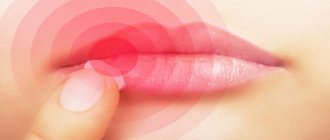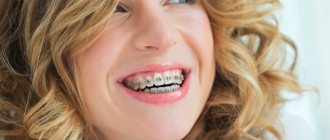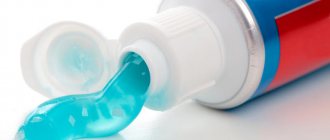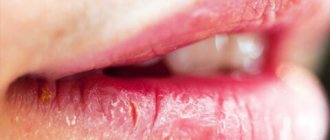Did you know that the thickness of the skin on the lips is 4 times less than on other parts of the face. In addition, the mucous membrane is absolutely devoid of sebaceous and sweat glands. Therefore, lips age faster than other parts of the face. To prolong youth, cosmetologists advise, starting from the age of 18, to take daily care of the delicate skin around the mouth and mucous membranes. Today cosmetologists at the ANACOSMA clinic will tell you in detail how to do this correctly and what modern cosmetological procedures will help restore elasticity and expressiveness to your lips.
What is cheilitis on the lips
According to ICD 10 , cheilitis is a benign inflammatory pathology that develops on the lips.
The appearance of the disease occurs due to dysfunction of internal organs and the immune system. Cheilitis may not always be an independent pathology. It is often a characteristic sign of more serious diseases.
Cheilitis often develops on the upper and lower lips. With this pathology, the red border and their mucous membrane are affected. The development of the disease is provoked by regular negative effects on the lips and the absence of a natural protective layer. This leads to infection of the surface of the lips, as a result of which microcracks form and the skin becomes dry.
Important! If cheilitis develops as a result of a sharp decrease in immunity, then it is not transmitted through household contact. You can become infected through close bodily contact only with cheilitis of infectious etiology.
What is cheilitis on the lips and how is it transmitted:
Wind and sun are not friends
There is also the so-called meteorological cheilitis, which often develops in those who spend a lot of time in the wind and are often exposed to sudden temperature changes in the air.
And in the southern regions, where the sun shines brightly almost all year round and therefore increases solar radiation, actinic cheilitis is common.
What to do. Lips should be well protected and constantly use hygienic and sun-protective lipstick. And for those who work in the wind, on the street, a special ointment based on lamb fat is suitable, which is no less effective than lipstick.
These two types of cheilitis must be treated promptly and carefully so that they do not gradually become chronic, because against their background, oncological diseases of the lips and oral cavity often rapidly develop.
Symptoms
In modern medicine, cheilitis is classified into several types, each of which has its own symptoms.
At the initial stage of development, pathology is manifested by visual signs. Among them it is worth highlighting:
- Peeling of the skin of varying intensity.
- Excessive dry skin.
- Formation of a red border at the border of the skin and lips.
- Swelling of the mucous membrane.
- Cracks, ulcers, and blisters with exudate may appear.
The general clinical picture of cheilitis is supplemented by secondary symptoms in the form of:
- Local and general hyperthermia.
- Decreased immune defense.
- Inflammatory processes in the periodontium.
- Plaque soreness
- The presence of purulent exudate in wounds on the lips.
- Formation of ulcers.
Reference! Cheilitis is very easy to recognize by the first signs, which are clearly visible on the lips already at the initial stage. Depending on the type of disease, the intensity of symptoms may increase significantly.
About the symptoms of types of cheilitis, part 1:
Part 2:
Another crack?
A serious problem is a crack in the middle of the lip, which is very difficult to get rid of - the inflammatory process is “stimulated” by microbes that get into it, which prevents healing, and the lip in this place often bursts again and again. And this is not only a cosmetic flaw that spoils life - the crack causes pain when talking and eating. The disease can be triggered by injuries, lack of vitamins, smoking and meteorological factors.
What to do . First of all, find the reason that causes the crack to form again and again. And be patient to complete the course of treatment. The doctor will prescribe drugs that have an anti-inflammatory effect and accelerate the formation of epithelium at the site of injury. Sometimes antibiotics are needed.
In extremely difficult cases, they resort to excision of the crack. When the course of treatment is completed, it is important to ensure protection against relapse: use hygienic lipstick, forget about childhood habits: do not lick your lips, do not suck a pencil, do not bite your nails, give up spicy and too hot food.
Reasons for appearance
Poor quality lipsticks are one of the possible causes of the disease.
The disease cheilitis has an inflammatory etiology.
The following factors can provoke the development of this pathology:
- Contrasting changes in air temperature.
- Constant consumption of sour, salty, spicy and hot foods.
- Systematic use of low quality lipstick.
- Exposure to aggressive chemicals.
- Negative environmental impact.
- Contact with allergens.
- Infection of the body.
- Prolonged and prolonged stress conditions.
- Disorders of immunological reactivity in the body.
- Respiratory dysfunctions.
- Violations of the architectonics of lip closure.
- Genetic abnormalities.
- Diseases of the endocrine system and gastrointestinal tract.
- Undergoing chemotherapy.
At risk are people with chronic periodontal diseases, caries and tartar, and men aged 20 to 60 years. Pathology can also occur in the presence of hypersensitivity to meteorological factors, hereditary predisposition and in the presence of harmful work associated with constant exposure to chemicals.
Are complications possible?
Dermatologists say that in 90% of cases, chapped lips do not have serious complications.
Adverse consequences include:
- pain and discomfort in the lip area;
- psychological discomfort;
- the appearance of deep cracks and sticking in the corners of the mouth.
But there are cases when severely chapped lips without the necessary treatment lead to severe tissue swelling, and wounds lead to bacterial infection. It is also possible to develop progressive cheilosis, in which skin lesions spread to other areas of the face.
The problem of chapped lips can be solved simply: it is enough to follow preventive measures and use special cosmetics.
Mild flaking can be treated with home remedies or regular baby cream. But it is worth remembering that the formation of deep cracks with constantly releasing liquid may indicate tissue infection and require qualified help.
Author: Shalunova Anna
Kinds
In modern medical practice, depending on the etiology of the disease, the following types of cheilitis are distinguished.
| Name | Description, external signs and accompanying symptoms |
| Exfoliative | They are provoked by neurogenic factors, pathologies of the thyroid gland and dysfunction of the immune system. This form is characterized by a chronic course, in which only the red border is affected. There are two types: dry and exudative. The surface of the lips is dry and peeling around the edges. A red border is observed along the entire length of the lips. In the dry form, hyperthermia of the lips and the presence of translucent, mica-like scales of a gray-brown color are observed. The exudative form is manifested by severe inflammation and swelling of the lips. Numerous scales and crusts of yellow-brown or gray color are concentrated on them. They are large and look like one continuous layer. Severe pain and burning when closing lips. |
| Angular | An inflammatory pathology that affects the mucous membrane and skin of the corners of the mouth. With this pathology, painful seizures are formed: candidiasis, streptococcal. The development of this form of cheilitis is provoked by fungi of the genus Candida. It manifests itself as peeling of the lips followed by the appearance of cracks on them. Significant swelling and local hyperthermia in the corners of the lips are possible. The cracks are covered with a white layer, which can be easily eliminated. The red border of the lips becomes inflamed. There is severe itching and burning. With streptococcal angulitis, blisters form that develop into erosions. Children lose their sense of appetite. |
| Candida | It develops against the background of a decrease in the body’s protective functions. At the initial stage, it is characterized by slight redness of the outer surface of the mouth and oral mucosa. Swelling develops and the lips become covered with a gray-white film. The mucous membrane is covered with a white coating of curd consistency. After cleaning it, foci of inflammation open. |
| Meteorological | Formed under the influence of adverse meteorological factors. In most cases, the lower lip is affected. The red border along its entire length becomes inflamed. The skin dries out, acquires a rich red color, swelling develops, and scales are observed over the entire surface. You feel tightness, dryness and a slight burning sensation. Over time, deep cracks appear. |
| Actinic | Provoking factors are prolonged exposure to UV rays. It has a strong seasonal character, especially in summer. It has two forms: dry and exudative. The lower lip is most often affected. It is characterized by increased dryness and peeling of the skin of the lips. In the exudative form, bubbles with liquid content form. If their integrity is damaged, the lip becomes inflamed and swells. Takes on a bright red color. |
| Contact allergic | It develops when the lips come into contact with various types of allergens. Localized on the red border of the lips. Sometimes it can spread to the skin of the circumlabial area and the oral mucosa. It manifests itself as erythema, small blisters, which quickly take on the appearance of erosion. The patient experiences a burning sensation, itching, and possible swelling of the red border. |
| Atopic | A secondary form of cheilitis, indicating the presence of neurodermatitis or atopic dermatitis. It lasts a long time and worsens in autumn or winter. In the warm season it is in remission. The difference from other forms of cheilitis is that inflammation does not spread to the oral mucosa. Localized on the red border and in the corners of the lips. It manifests itself in the form of infiltration and peeling, with the formation of small scales over the entire surface. As the pathology develops, cracks and deep grooves are observed. Accompanied by a feeling of itching and burning. |
| Glandular | It most often affects the lower lip. May be a primary or secondary disease. The etiology is associated with the presence of congenital defects of the salivary glands or chronic pathologies of the lips. In the Klein area, dilated ducts of the salivary glands appear. Leukoplakia or keratinization of the red border develops. The skin on the lips is overdried, macerated, cracked and covered with erosions. When the gland duct becomes infected, suppuration develops. The lips become swollen, sore and covered with brown or yellow-green crusts. At an advanced stage, an abscess may be present. |
| Eczematous | Develops against the background of inflammatory processes of neuroallergic etiology of the epithelium. There are three stages of pathology: acute, subacute and chronic. The acute form is accompanied by the formation of scales, weeping, crusts, and vesicles on the red border. The area is susceptible to great swelling, severe burning, itching and local hyperthermia appear. The chronic stage is characterized by the extinction of inflammatory processes and the development of thickening of the lips. |
| Hypovitaminosis | Formed when there is a lack of vitamins in the body, especially group B. Accompanied by the following symptoms: dryness and burning of the skin of the lips. The mucous membrane is swollen, inflamed, bright red. Vertical cracks and fine scaly peeling are localized along the red border of the lips. The cracks hurt and bleed. A characteristic feature of this pathology is swelling of the tongue. |
| Abrasive precancerous cheilitis Manganotti | Precancerous lesion of the red border of the lips. The disease is characterized by a precancerous and abrasive nature. The main location is the red border of the lips on the side. Characterized by the presence of one or more shapeless and painless erosions. The surface of the erosions is covered with bloody dense crusts. When they are damaged, the lips bleed heavily. At an advanced stage, the bottom of the erosions becomes denser, polyps grow on their surface, and when damaged, severe bleeding begins. |
| Macrocheilitis | It is a characteristic feature of Melkerson-Rosenthal syndrome. The surface of the tongue becomes covered with folds, the facial trunk of the ternary nerve is paralyzed. The lips swell, lose their anatomical shape, become shiny, itchy and may turn blue. Pain or swelling of the facial muscles may occur. The affected tissues may be soft or densely elastic upon palpation. |
| Lupus cheilitis | A secondary form, indicating the presence of lupus erythematosus in the body. Depending on the stage of its progression, it has the following classification: typical, without clinically significant atrophy, erosive-ulcerative, deep. A characteristic feature of the pathology is severe swelling of the lower lip. Symptoms of the pathology are clearly expressed in the active phase of the disease and appear as:
At an advanced stage, atrophic processes begin to develop along the red border of the lips. |
Important! Only a qualified specialist can correctly differentiate the type of cheilitis and prescribe appropriate treatment.
Prevention
To prevent chapped lips and tissue tearing, you must follow some rules.
Protect skin
Before going outside, you need to apply special products to your lips:
- hygienic lipsticks;
- balms;
- cream.
In winter, ethanol-free products are suitable, and in summer with additional ultraviolet protection.
To refuse from bad habits.
Factors that damage the skin on the lips include:
- smoking;
- licking;
- breathing through the mouth;
- biting dry skin;
- alcohol abuse.
Follow the rules of a balanced diet
To maintain healthy skin, it is necessary to consume sufficient amounts of vitamins and minerals, as well as to prevent vitamin deficiencies by taking vitamins in several courses per year. It is also important to drink enough water. On average, an adult needs 1.5-2.0 liters per day.
Maintain indoor microclimate
Conditions considered favorable for humans are:
- air temperature - 18-22°C;
- humidity - from 40%.
At the same time, the air must be fresh. To do this, ventilate the premises at least 3-5 times a day.
Proper lip care
After washing, it is recommended to pat your skin with a towel. Water for cleaning your face should be clean and warm. You should also not use toothpastes containing fluoride. Use only high-quality cosmetics. If you experience unpleasant sensations on the skin of your lips after using lipstick or gloss, it is recommended to change the product as soon as possible.
Additionally, you can use several methods to prevent chapping:
- Every evening, apply a thin layer of butter with a fat content of at least 82.5% to your lips. This method allows you to saturate the skin with vitamins A and E and moisturize it.
- Carry out scrubbing and peeling procedures 2-3 times a week. To do this, you can use store-bought products or homemade recipes: coffee grounds with honey, coarse salt with aloe, ground oatmeal with sour cream.
After a light massage of the skin, you need to wash your face with warm water and apply any vegetable oil to your lips. Dermatologists note that sea buckthorn oil and shea butter are considered the best.
Diagnostics
If you experience the slightest signs of cheilitis, you should contact your dentist.
During the examination, the doctor can immediately diagnose the disease or prescribe a full examination to differentiate the pathology. It is recommended to go through:
- Laboratory examination in the form of clinical tests of urine and blood.
- Smear on the flora of the oral area and surface of the lips,
- Bacteriological study of the secreted exudate.
- Histological examination of the tissues of the lesions.
- Ultrasound examination of the lower and upper lips.
If these examinations are not enough or the pathology is accompanied by pronounced additional signs, a consultative examination by specialists will be required.
It can be:
- Dermatologist.
- Neuropathologist.
- Gastroenterologist.
- Endocrinologist.
- Oncologist.
- Allergist.
- Infectious disease specialist.
- Immunologist.
Attention! The key to successful therapy depends on the timely detection of pathology in the initial stage. Therefore, it is necessary to carry out qualitative differential diagnostics to establish the exact type of cheilitis.
Treatment methods
Treatment of cheilitis depends on the form and stage of the disease and the patient’s skin. Doctors of various specialties can treat this disease: dermatologists, allergists, dentists. After clarifying the diagnosis, a treatment regimen is prescribed, consisting of the use of :
- B vitamins and minerals.
- Various gels for external use.
- Tablets and injections for systemic treatment.
- Physiotherapeutic procedures.
- Drugs and methods of alternative medicine.
The main efforts in the treatment of cheilitis are aimed at eliminating the cause that provoked the disease.
So for cheilitis:
- Exfoliative , psychotropic medications are prescribed: Sibazon, Phenazepam or Thioridazine. The lips are also treated with a special nourishing cream Spermaceti, rosehip oils or retinol. The exudative form of the pathology is treated with corticosteroid ointments: Prednisolone, Hydrocortisol, and boron-vaseline. Acupuncture and Bucca rays are considered effective.
- For angular, antibacterial therapy is carried out using Erythromycin and Furacilin ointments. Antifungal Nystatin ointment, creams containing retinol and zinc compounds are also prescribed. B vitamins are taken orally.
- For candidiasis, local antifungal therapy is carried out using Clotrimazole ointments, antibacterial solutions of Nystatin or Natamycin. Antiseptics Chlorhexidine or Hexetidine are recommended.
- In meteorological cases, the emphasis is on vitamin therapy and the use of nourishing creams or balms. The acute form of the pathology is treated with steroid ointments, and for daily use, the use of sunscreen is mandatory.
- For actinic , take the Delagil complex, B vitamins, Nicotinic acid, Prednisolone in small doses and external use of steroid and corticosteroid ointments: Advantan or Afloderm. A prerequisite for effective treatment is the use of Angelolis sunscreen ointment.
- For glandular at the initial stage, anti-inflammatory ointments are used: Naphthalene, Prednisolone, Hydrocortisone. The secondary form of cheilitis is treated by eliminating the provoking disease.
- In case of contact allergic form, the factors that caused the allergic reaction are eliminated. Drug therapy consists of the use of steroid ointments and antihistamines: Suprastin, Loratadine and others.
- For atopic, desensitizing therapy is carried out, in which antihistamines are taken: Fenkarol, Claritin, Diazolin. A protracted form of the pathology is treated with local application of ointments with corticosteroids.
- For eczematous, sedative and desensitizing drugs are prescribed. Local therapy consists of the use of ointments and aerosols containing corticosteroids. If eczema has a microbial etiology, therapy is supplemented with antimicrobial agents.
- For macrocheilitis, treatment consists of eliminating the cause of the disease. To directly combat cheilitis, corticosteroids are prescribed in combination with broad-spectrum antibacterial drugs. Antimalarial, antihistamine medications and vitamin complexes containing ascorbic acid and B vitamins are also taken.
Important! An effective auxiliary method for the conservative treatment of cheilitis of any type is physiotherapy and, in particular, laser therapy and electrophoresis with heparin ointment in combination with dimexide.
How to treat different types of cheilitis:
In advanced stages of cheilitis and to correct cosmetic defects, surgical treatment is performed. Laser excision is considered the most effective and less traumatic.
It is possible to use traditional methods in the treatment of cheilitis only after agreement with the attending physician.
recipes for treatment at home are considered the most effective :
- For daily treatment of affected areas of the lips, oil solutions of retinol and tocopherol are used.
- A good moisturizing and nourishing effect is obtained from daily use of propolis pulp. It is applied to the lips for 30 minutes.
- A mixture of juices is prepared from the leaves of Kalanchoe, celandine, buttercup, plantain and garlic. Take them in equal proportions, mix and rub on sore lips.
- Use lotions made from marigolds. Prepare the decoction as follows:
10 grams of flowers are dipped in half a liter of boiling water and using a water bath, leave for ten minutes. Allow the liquid to cool and strain. Wet a napkin and apply it to your lips every half hour.
It is important to know that self-medication is unwise and harmful, since cheilitis has many forms and only a specialist can determine the type of disease and prescribe adequate treatment.
How to treat the disease in children
Taking into account the symptoms and form of cheilitis in children, appropriate treatment is prescribed, which has its own characteristics :
- Hormone therapy, especially topical preparations, is prescribed with caution, remembering that the mucous membrane and dermis of the lips can instantly absorb various substances.
- From the group of antiviral drugs, children are allowed to use Acyclovir.
- The antimicrobial drug Metrogyl denta is safe and effective for the treatment of infectious and inflammatory diseases of the oral cavity in children.
- In the fight against atopic cheilosis, the immunostimulating drug Imudon is used in pediatrics in combination with topical medications.
- Therapy for cheilosis in childhood is carried out comprehensively, including antiseptic, painkillers and immunomodulators.
- Particular attention is paid to mandatory sanitation of the oral cavity, therapeutic exercises of the facial muscles and proper nasal breathing.
Acyclovir
Metrogil Denta
Imudon
When treating children, it is necessary to take into account all the features of the course of the disease, the stage of the disease and the age of the child.
About traditional medicine for cheilitis:
Preventive measures
Prevention of cheilitis includes a number of measures aimed at:
- Protecting lips from harmful factors coming from outside.
- Timely visits to dentists.
- Maintaining a balanced diet.
- Maintaining a healthy lifestyle.
- Elimination of allergenic irritants.
- Increasing the body's immune forces.
- Use of vitamin-mineral complexes.
- Careful and daily oral hygiene and facial care.
- Carrying out gymnastics for the facial muscles.
- Complete cure of oral diseases.
Advice! Preventive measures should be observed, since the development of cheilitis can provoke the appearance of serious complications and ailments that are dangerous to life and health.
If hair grows in your mouth
Of course, this does not happen, but sometimes it seems that the tongue is covered with... hair. The fact is that thread-like papillae grow on the tongue, and their length can reach one and a half centimeters, and they become like hairs. This phenomenon is observed in cases of impaired immunity, in response to certain medications that disrupt the microflora of the oral cavity, as well as in patients with chronic gastritis and colitis. There is nothing wrong with this, but the patient experiences unpleasant sensations that create constant discomfort.
What to do . If possible, you should stop taking medications and take only antihistamines. After 5–10 days, the “hair” on the tongue will disappear. And don’t forget to brush not only your teeth, but also your tongue twice a day.

